-
Use Cases
-
Resources
-
Pricing
French and Indian War Timeline
(1754 - 1763)The French and Indian War was a conflict between the British and French over land in North America.
Diplomatic Negotiations and Treaties
Albany Congress
Jun 19, 1754 - Jul 11, 1754
% complete
The Albany Congress was a meeting of representatives from seven British colonies and the Iroquois Confederacy. It aimed to secure the support of the Iroquois and establish a unified colonial defense against the French. Although the Albany Plan of Union proposed by Benjamin Franklin was not adopted, it laid the groundwork for future colonial cooperation.
Image source: Albany Congress

Treaty of Easton
Oct 26, 1758
% complete
The Treaty of Easton was a series of agreements between British colonial governments and various Native American tribes. It aimed to secure Native American neutrality or support for the British during the French and Indian War.
Image source: Treaty of Easton

Treaty of Paris (1761)
Feb 10, 1761
% complete
The Treaty of Paris was a peace agreement that ended the Third Carnatic War between Britain and France in India. Although not directly related to the French and Indian War in North America, it reflected the broader conflict between the two powers.
Treaty of Paris (1762)
Feb 10, 1762
% complete
The Treaty of Paris was a preliminary agreement between Britain and Spain that ended their involvement in the French and Indian War. Spain ceded Florida to Britain in exchange for returning Cuba.
Treaty of Paris (1763)
Feb 10, 1763
% complete
The Treaty of Paris marked the end of the French and Indian War. France ceded its North American territories to Britain, including Canada and all French claims east of the Mississippi River, except New Orleans. This victory for Britain solidified its control over North America and reshaped the geopolitical landscape.
Image source: Treaty of Paris (1763)

Treaty of Hubertusburg
Feb 15, 1763
% complete
The Treaty of Hubertusburg was a peace agreement that ended the conflict between Prussia and Austria during the Seven Years' War, which was closely connected to the French and Indian War. The treaty reaffirmed the status quo ante bellum, restoring territorial boundaries and recognizing Prussian control over Silesia.
Image source: Treaty of Hubertusburg

Battles and Military Campaigns
Battle of Fort Necessity
Jul 3, 1754
% complete
The Battle of Fort Necessity was the first major engagement of the French and Indian War. British forces, led by a young George Washington, were defeated by French and Native American forces, leading to the surrender of the fort and escalating tensions between the two sides.
Image source: Battle of Fort Necessity
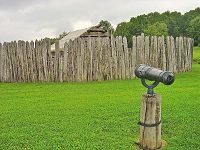
Battle of the Monongahela
Jul 9, 1755
% complete
British General Edward Braddock's expedition to capture Fort Duquesne ended in disaster when his forces were ambushed by French and Native American troops. Braddock was mortally wounded, and the British suffered a heavy defeat.
Image source: Battle of the Monongahela
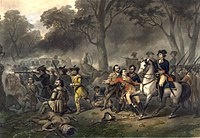
Battle of Lake George
Sep 8, 1755
% complete
British and colonial forces, led by Sir William Johnson, successfully repelled a French and Native American attack at Lake George, securing a strategic victory and preventing the French from advancing further south.
Image source: Battle of Lake George
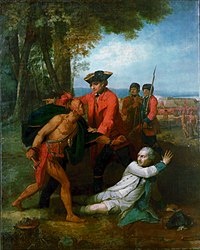
Battle of Oswego
Aug 10, 1756
% complete
French forces, led by General Montcalm, captured Fort Oswego from the British, securing a significant victory and further consolidating French control over the Great Lakes region.
Image source: Battle of Fort Oswego

Battle of Fort William Henry
Aug 3, 1757
% complete
French forces, with Native American allies, besieged and captured Fort William Henry from the British. The subsequent events, including the massacre of British soldiers and civilians, became a controversial and tragic episode of the war.
Image source: Siege of Fort William Henry

Battle of Ticonderoga
Jul 8, 1758
% complete
British and colonial forces, under General James Abercrombie, suffered a costly defeat when they unsuccessfully attempted to capture Fort Carillon (later renamed Fort Ticonderoga) from the French. The battle highlighted the importance of fortifications and defensive positions in the conflict.
Battle of Carillon
Jul 8, 1758
% complete
British and colonial forces, under General James Abercrombie, suffered a costly defeat when they unsuccessfully attempted to capture Fort Carillon (later renamed Fort Ticonderoga) from the French. The battle highlighted the importance of fortifications and defensive positions in the conflict.
Image source: Battle of Carillon

Battle of Fort Duquesne
Nov 24, 1758
% complete
British forces, led by General John Forbes, captured Fort Duquesne from the French, renaming it Fort Pitt. This victory secured British control over the Ohio River Valley and weakened French influence in the region.
Image source: Battle of Fort Duquesne
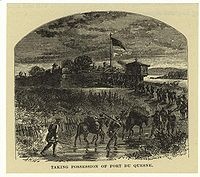
Battle of Quebec
Sep 13, 1759
% complete
British forces, under the leadership of General James Wolfe, launched a successful assault on the fortified city of Quebec, a crucial French stronghold. The battle resulted in a decisive British victory, leading to the surrender of Quebec and ultimately the fall of New France.
Battle of the Plains of Abraham
Sep 13, 1759
% complete
The Battle of the Plains of Abraham was a pivotal engagement during the siege of Quebec. British forces, led by General Wolfe, defeated the French under General Montcalm, resulting in the British capture of Quebec and the death of both commanders.
Image source: Battle of the Plains of Abraham
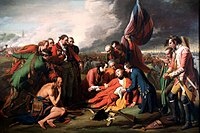
Battle of Lake Champlain
Oct 11, 1759
% complete
British forces, commanded by General Amherst, defeated the French fleet on Lake Champlain, securing British control over the lake and preventing French reinforcements from reaching Canada.
Image source: Battle of Plattsburgh
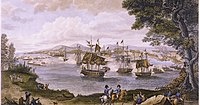
Battle of Sainte-Foy
Apr 28, 1760
% complete
French forces, led by General Lévis, launched a successful counterattack against the British at Quebec. Although the British retained control of the city, the battle demonstrated the resilience of French forces and prolonged the conflict.
Image source: Battle of Sainte-Foy
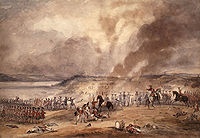
Impact on Indigenous Peoples
Pontiac's Rebellion
1763 - 1766
% complete
Pontiac's Rebellion was an armed conflict between Native American tribes and British forces in the Great Lakes region. It was sparked by growing Native American discontent over British policies and encroachment on their lands. Although the rebellion was ultimately suppressed, it led to changes in British Indian policy.
Image source: Pontiac's War
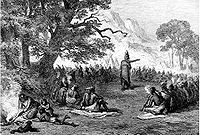
Political and Strategic Developments
Proclamation of 1763
Oct 7, 1763
% complete
The Proclamation of 1763 was issued by the British Crown after the French and Indian War. It prohibited colonial settlement west of the Appalachian Mountains, aiming to stabilize relations with Native American tribes and avoid further conflicts.
Image source: Royal Proclamation of 1763
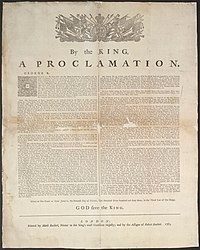
Key Facts
- The war was part of a larger conflict between Great Britain and France known as the Seven Years' War.
- The war was fought primarily in North America, but also spread to Europe, Africa, and Asia.
- The Treaty of Paris in 1763 ended the war and resulted in France losing all its North American possessions to Britain.
- The war played a major role in the strained relationship between Britain and its American colonies, leading to the American Revolution.
- Native American tribes in North America played a significant role in the war, with many aligning themselves with either the British or the French.
Source
This French and Indian War timeline was generated with the help of AI using information found on the internet.
We strive to make these timelines as accurate as possible, but occasionally inaccurates slip in. If you notice anything amiss, let us know at [email protected] and we'll correct it for future visitors.
Create a timeline like this one for free
Preceden lets you create stunning timelines using AI or manually.
Customize your timeline with one of our low-cost paid plans
Export your timeline, add your own events, edit or remove AI-generated events, and much more
Free
$
0
free forever
No credit card required.
Basic
$
10
/month
billed annually
Cancel anytime.
Pro
$
16
/month
billed annually
Cancel anytime.
Common Questions
Can I cancel anytime?
Yes. You can cancel your subscription from your account page at anytime which will ensure you are not charged again. If you cancel you can still access your subscription for the full time period you paid for.
Will you send an annual renewal reminder?
Yes, we will email you a reminder prior to the annual renewal and will also email you a receipt.
Do you offer refunds?
Yes. You can email us within 15 days of any payment and we will issue you a full refund.
What if I have more questions?
Check out our pricing docs or send us an email anytime: [email protected].